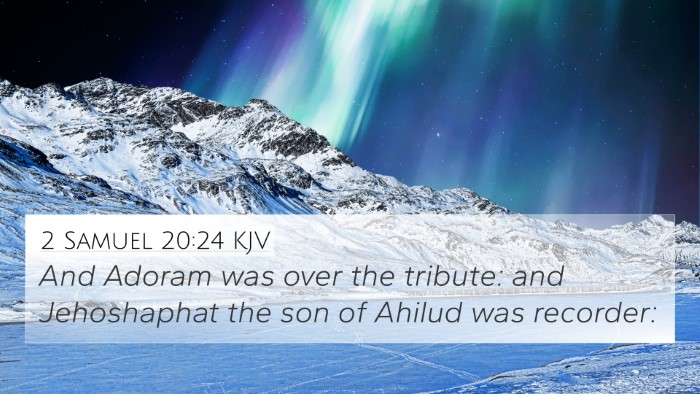Understanding Isaiah 36:3
Verse Overview: Isaiah 36:3 showcases critical moments during King Hezekiah's reign, as the Assyrian rabshakeh addresses the people of Jerusalem, presenting a formidable challenge not just politically but spiritually.
This verse epitomizes the conflict between faith and fear, exemplifying the broader themes of reliance on God over worldly powers.
Commentary Insights
Matthew Henry's Commentary
Matthew Henry emphasizes that this passage highlights the Assyrian invasion's intimidation tactics. He notes that the enemy's intent was to undermine the Israelites' faith by sowing doubt about God's protection.
Albert Barnes' Commentary
Albert Barnes observes that this scene illustrates the desperation of the people in Jerusalem and their vulnerability in the face of a superior military force. He discusses the role of the rabshakeh as a representative of the Assyrian king, using psychological warfare against the city.
Adam Clarke's Commentary
Adam Clarke articulates that the rabshakeh's approach serves as a reflection of the common ancient Near Eastern practice of psychological intimidation. He notes that the Assyrians, notorious for their hatred of the Israelites, deployed this strategy to manipulate the hearts of Jerusalem's citizens.
Thematic Connections and Cross References
This verse not only stands alone but also connects thematically with numerous passages throughout Scripture, enriching our understanding of its implications. Here are some Bible verse cross-references:
- Isaiah 37:10: The continuation of the threats from the Assyrians, reinforcing the theme of reliance on God.
- 2 Kings 18:19: The direct challenge from the Assyrian officials to Hezekiah, paralleling the confrontational nature of Isaiah 36:3.
- Psalm 46:1-3: God as a refuge and strength during tumultuous times, contrasting the fear presented in Isaiah 36.
- Isaiah 37:14-20: Hezekiah's prayer for help and guidance from God, highlighting the appropriate response to external threats.
- Jeremiah 17:5-8: The contrast between trusting in man versus trusting in God, which dovetails into the faith crisis depicted in Isaiah 36:3.
- Isaiah 30:2-3: Warning against reliance on Egyptian help, reflecting the dangers of misplaced trust during trying times.
- Matthew 10:28: Jesus' admonishment on fearing those who kill the body but cannot kill the soul, finding parallels in spiritual resilience.
Inter-Biblical Dialogue
Exploring the connections between Bible verses reveals a rich dialogue throughout Scripture. The emotional toll of conflict and reliance on divine intervention resonate across various books, linking narratives and themes.
- The reliance on God amidst adversity, seen in both the Old Testament accounts of Hezekiah and the New Testament teachings of Jesus.
- The use of rhetorical strategies by adversaries throughout the biblical narrative, providing a commonality in spiritual battles.
- The prophetic response to fear and threats, echoing in the words of Isaiah and the writings of Paul, encouraging faith over fear.
Using Cross-Referencing Tools
Engaging with the Scriptures through Bible cross-reference guides enhances understanding:
- Bible Concordance: Utilize concordances to find synonyms and related passages to Isaiah 36:3.
- Bible Cross-reference Guide: Explore thematic connections that emerge through cross-referencing biblical texts.
- Cross-reference Bible Study: Employ study methods that incorporate these inter-Biblical dialogues for deeper insight.
Conclusion
Isaiah 36:3 serves as a potent reminder of the challenges faced by believers in moments of uncertainty. The commentaries provided by Matthew Henry, Albert Barnes, and Adam Clarke illuminate the complexities of faith in times of crisis. By exploring the connections between Bible verses, we gain a comprehensive understanding of the themes of fear, faith, and divine intervention.





